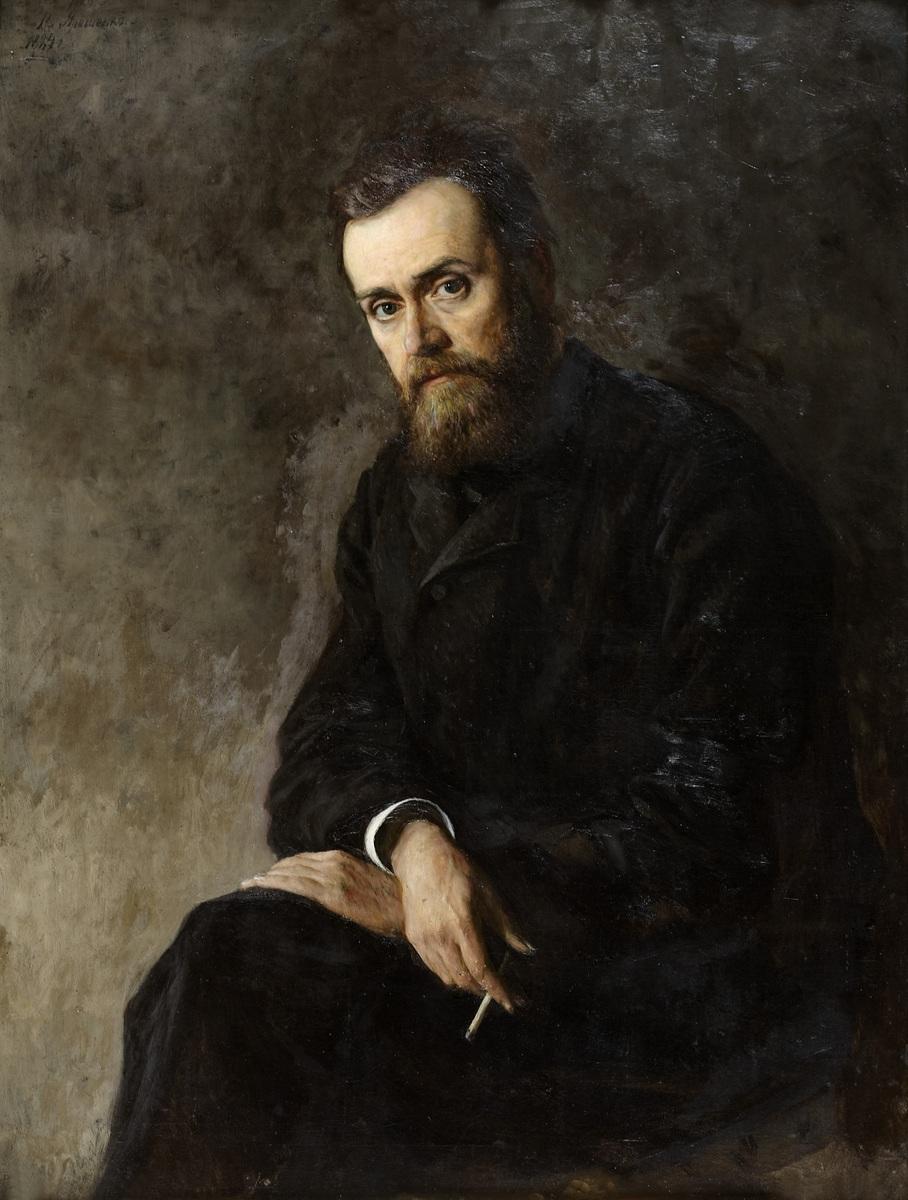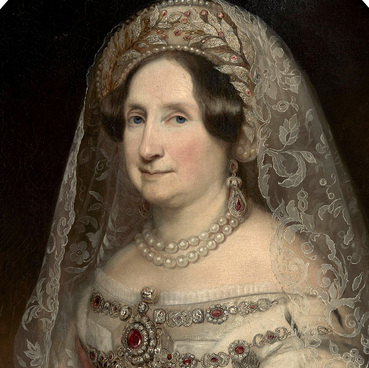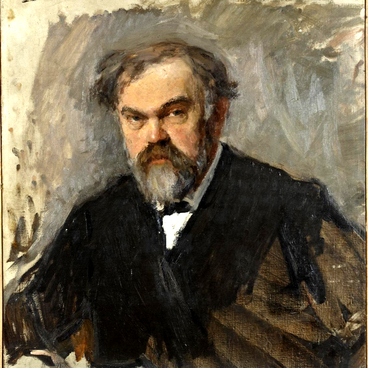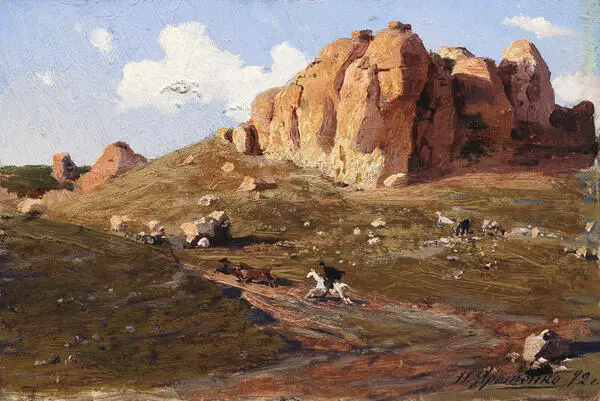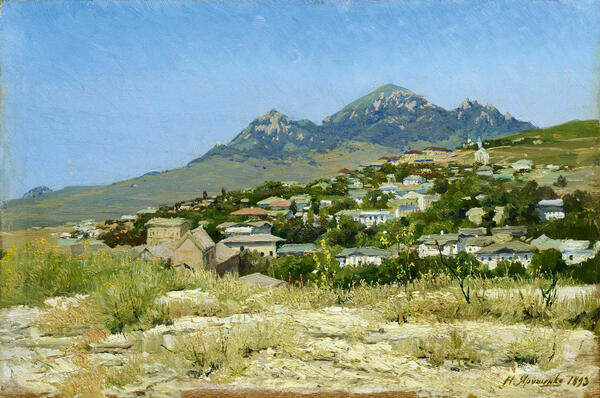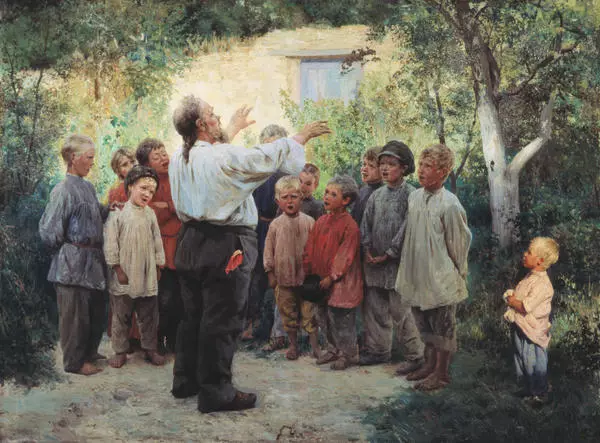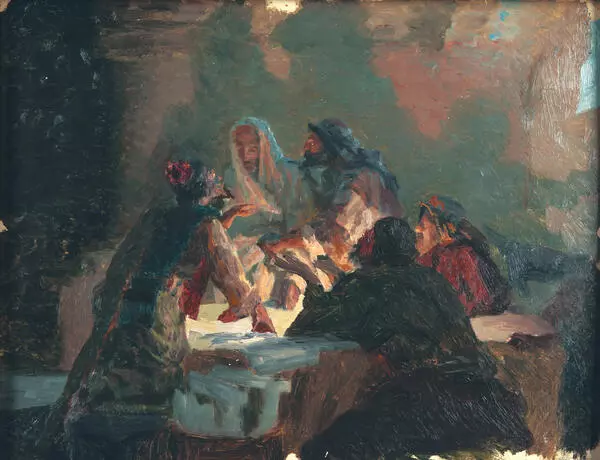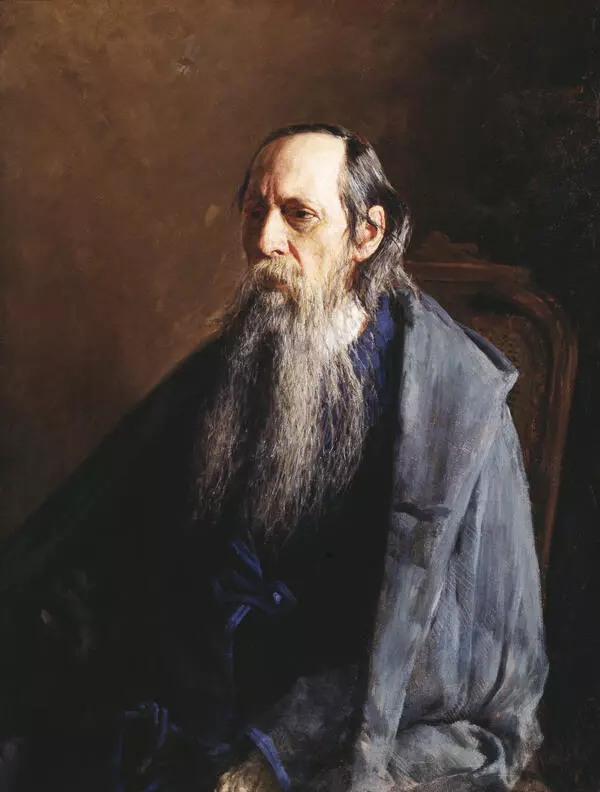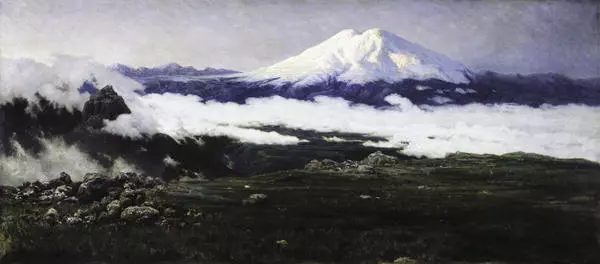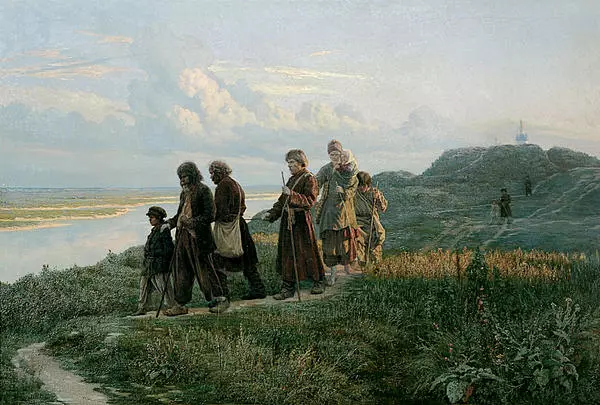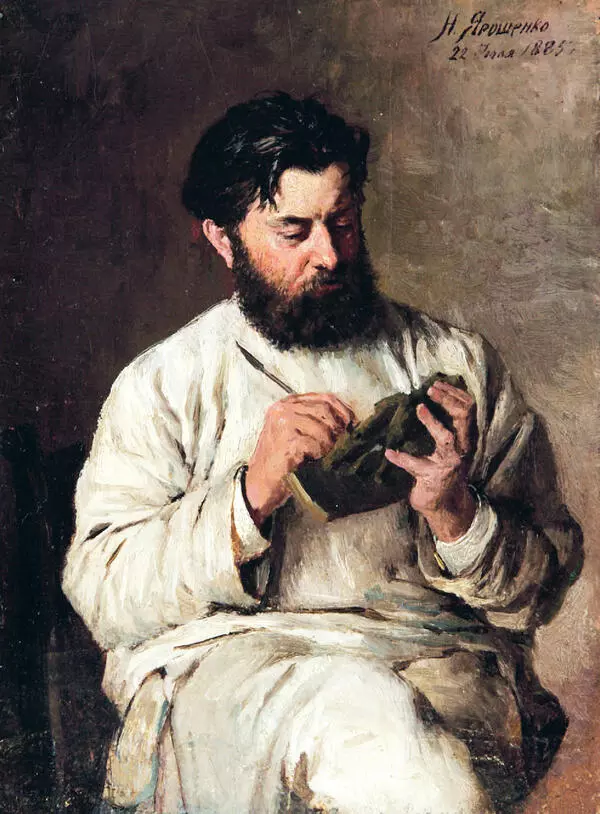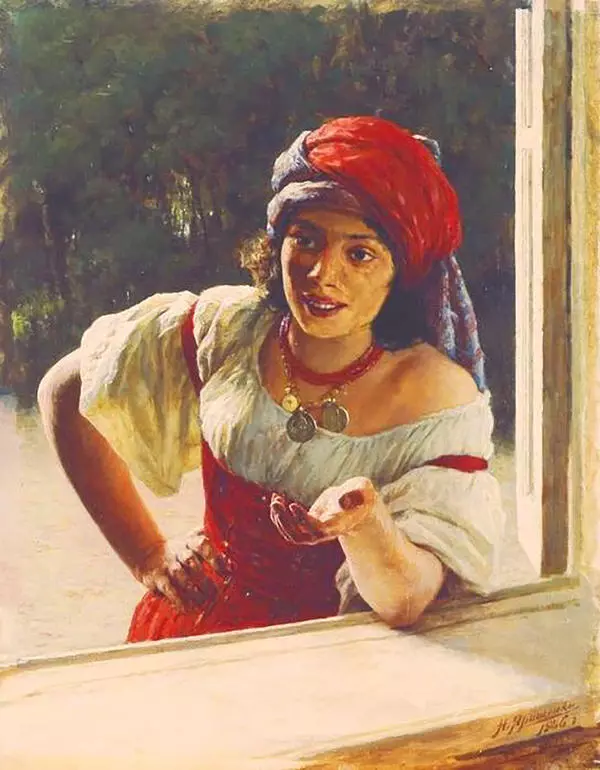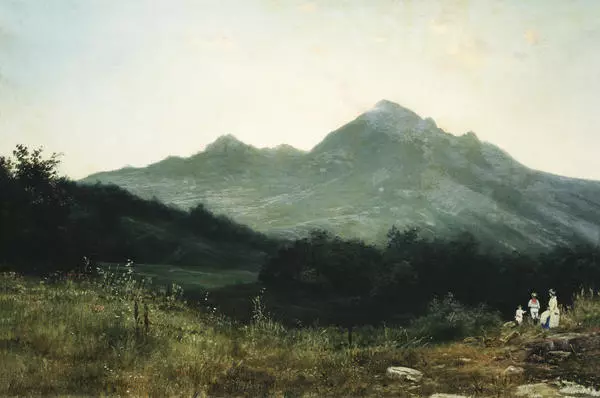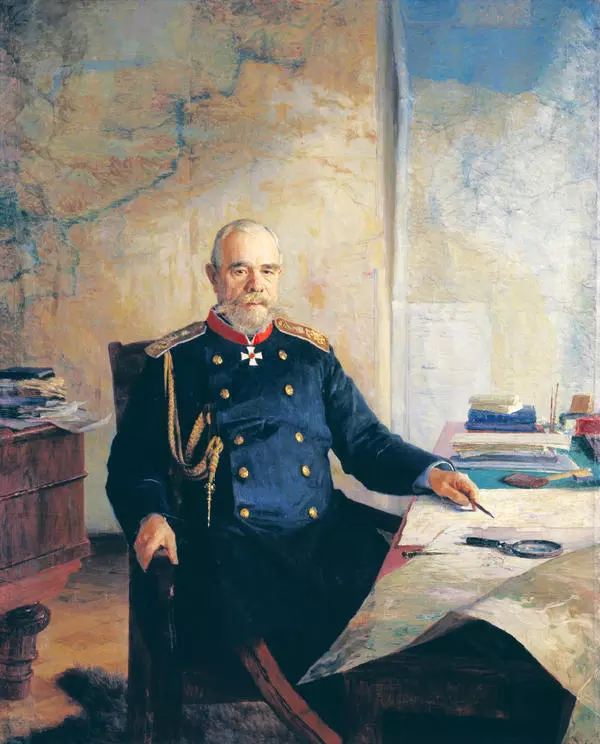Nikolai Aleksandrovich Yaroshenko, continuing the traditions of the Russian realistic portrait, created a whole gallery of images of writers, poets, artists, close to him in spirit and aspirations. One of the best in this series is the portrait of Gleb Uspensky (1843 — 1902), a writer and publicist who personified the advanced aspirations of the Russian intellectuals.
To reveal the character of his hero, Yaroshenko, as, firstly, a master of psychological analysis, uses a minimum of artistic tools — the portrait is painted a little dry and almost monochrome with gray and black tones prevailing in it. However, the artist unusually accurately conveyed the characteristic features of Uspenskiy: a tense pose with a slight bow of his head, crossed, expressive hands and especially the eyes of the writer, as if expressing all the anxiety of the enlightened part of Russian society for the fate of the country. An inquiring and intense look, filled with internal burning, literally pervades the viewer with a silent question. Yaroshenko managed to create not just a portrait of a writer, but also a collective image of a ‘new man’, true to his civic principles. The painting was shown at the XII exhibition of the Wanderers in 1884, along with the portrait of an actress P. A. Strepetova, another famous work by Yaroshenko.
The fate of Nikolai Yaroshenko is in many ways different from the life path of his comrades. A democrat artist, an active member of the Company of Itinerant Art Exhibitions, who was called the ‘conscience’ of the Wanderers, he, at the same time, until 1892 worked as a military engineer-gunner at the St. Petersburg Cartridge Plant and resigned as Major General. Already in his early youth, Yaroshenko was associated with revolutionary-democratic circles. His wife was a student; his sister Sophia (married name — Savinkova) was a journalist and playwright, although she was better known as the mother of the leader of the Socialist Revolutionary Party, Boris Savinkov. It is interesting that in 1899, N. A. Yaroshenko and G. I. Uspensky became related when Yspensky’s daughter Vera Glebovna married Yaroshenko’s nephew Boris Savinkov.
To reveal the character of his hero, Yaroshenko, as, firstly, a master of psychological analysis, uses a minimum of artistic tools — the portrait is painted a little dry and almost monochrome with gray and black tones prevailing in it. However, the artist unusually accurately conveyed the characteristic features of Uspenskiy: a tense pose with a slight bow of his head, crossed, expressive hands and especially the eyes of the writer, as if expressing all the anxiety of the enlightened part of Russian society for the fate of the country. An inquiring and intense look, filled with internal burning, literally pervades the viewer with a silent question. Yaroshenko managed to create not just a portrait of a writer, but also a collective image of a ‘new man’, true to his civic principles. The painting was shown at the XII exhibition of the Wanderers in 1884, along with the portrait of an actress P. A. Strepetova, another famous work by Yaroshenko.
The fate of Nikolai Yaroshenko is in many ways different from the life path of his comrades. A democrat artist, an active member of the Company of Itinerant Art Exhibitions, who was called the ‘conscience’ of the Wanderers, he, at the same time, until 1892 worked as a military engineer-gunner at the St. Petersburg Cartridge Plant and resigned as Major General. Already in his early youth, Yaroshenko was associated with revolutionary-democratic circles. His wife was a student; his sister Sophia (married name — Savinkova) was a journalist and playwright, although she was better known as the mother of the leader of the Socialist Revolutionary Party, Boris Savinkov. It is interesting that in 1899, N. A. Yaroshenko and G. I. Uspensky became related when Yspensky’s daughter Vera Glebovna married Yaroshenko’s nephew Boris Savinkov.

